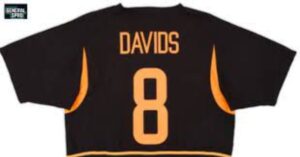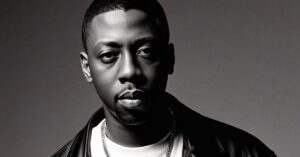[img]https://lookpic.com/cdn/i2/s/05282024182719-001.jpg[/img] – The Art of Fashion Photography
![[img]https://lookpic.com/cdn/i2/s/05282024182719-001.jpg[/img] - The Art of Fashion Photography](https://newagetrack.com/wp-content/uploads/2024/08/imghttpslookpic.comcdni2s05282024182719-001.jpgimg-The-Art-of-Fashion-Photography-1024x536.jpg)
Fashion photography is not just about capturing clothing—it’s about narrating a story through visual elements. Whether it’s haute couture or street fashion, every piece of clothing has its tale, and fashion photography brings it to life.
In this article, we’ll dive deep into the world of fashion photography, understanding its importance, evolution, and impact on both the fashion industry and society.
What is Fashion Photography?
Fashion photography is a genre of photography that is primarily focused on displaying clothing and other fashion items. It is a blend of art, creativity, and commercial interests, aiming to showcase fashion in a way that is both aesthetically pleasing and marketable. Fashion photography can be found in various forms, including magazines, advertisements, social media, and fashion shows.
The Role of Fashion Photography:
Fashion photography serves several purposes:
Promotional Tool: It helps brands promote their products by showcasing them in a visually appealing manner.
Artistic Expression: It allows photographers to express their creativity and artistry through the composition, lighting, and styling of fashion pieces.
Cultural Reflection: Fashion photography often reflects the culture and societal trends of the time, making it a powerful medium for social commentary.
Evolution of Fashion Photography:
Fashion photography has come a long way since its inception in the early 20th century. The genre has evolved significantly, influenced by technological advancements, cultural shifts, and changes in the fashion industry.
Early Days:
The origins of fashion photography can be traced back to the late 19th and early 20th centuries when photography started being used to document fashion. Initially, fashion photography was quite formal and static, focusing primarily on showcasing the garments rather than telling a story.
The Golden Age (1920s-1950s):
The 1920s to the 1950s is often referred to as the “Golden Age” of fashion photography. During this period, fashion photography became more glamorous and sophisticated. The rise of fashion magazines like Vogue and Harper’s Bazaar played a crucial role in popularizing fashion photography.
Photographers like Edward Steichen and Cecil Beaton brought a new level of artistry to fashion photography, using lighting, composition, and styling to create iconic images that still inspire photographers today.
The Modern Era (1960s-Present):
The 1960s marked the beginning of the modern era of fashion photography. This period saw the emergence of a more dynamic and expressive style, with photographers like Richard Avedon and Helmut Newton pushing the boundaries of what fashion photography could be. The use of movement, unconventional angles, and storytelling became more prevalent.
In recent years, fashion photography has become more diverse and inclusive, reflecting the changing dynamics of society. The rise of digital photography and social media has also revolutionized the field, making fashion photography more accessible to a broader audience.
The Impact of Fashion Photography on the Fashion Industry:
Fashion photography is a powerful tool that has a significant impact on the fashion industry. Here are some ways it influences the industry:
Shaping Fashion Trends:
Fashion photography plays a crucial role in shaping fashion trends. The images captured by fashion photographers often set the tone for what is considered fashionable. When a particular style or look is featured in a major fashion magazine or campaign, it often becomes a trend.
Branding and Marketing:
Fashion photography is essential for branding and marketing. The images used in advertising campaigns, lookbooks, and social media are often the first point of contact between a brand and its audience. A well-executed fashion photograph can create a strong brand identity and resonate with the target audience.
Influencing Consumer Behavior:
The visual appeal of fashion photography can have a significant influence on consumer behavior. A striking image can create desire, leading consumers to purchase the featured products. Fashion photography also plays a role in shaping consumers’ perceptions of a brand.
The Elements of a Great Fashion Photograph:
A great fashion photograph is the result of several elements coming together harmoniously. Here are some of the key components:
Composition:
The composition of a fashion photograph refers to how the elements within the frame are arranged. A well-composed photograph directs the viewer’s attention to the subject while maintaining a sense of balance and harmony.
Lighting:
Lighting is one of the most critical elements in fashion photography. The way light interacts with the subject can dramatically change the mood and feel of the image. Natural light, studio lighting, and even shadows can all be used creatively to enhance the photograph.
Styling:
Styling involves selecting the clothing, accessories, and props used in the photograph. The stylist works closely with the photographer to ensure that everything in the image complements each other and aligns with the overall concept.
Model Posing:
The way the model poses in a fashion photograph can greatly impact the final image. A skilled photographer will guide the model to create poses that are both aesthetically pleasing and aligned with the concept of the shoot.
Post-Processing:
Post-processing refers to the editing done after the photograph has been taken. This can include color correction, retouching, and other adjustments to enhance the overall look of the image. While post-processing is important, it’s essential to strike a balance to avoid over-editing.
The Role of Technology in Fashion Photography:
Technology has had a profound impact on fashion photography, from the equipment used to capture images to the platforms where they are shared.
Digital Photography:
The transition from film to digital photography has revolutionized the fashion photography industry. Digital cameras offer greater flexibility and convenience, allowing photographers to shoot more images and experiment with different techniques. Additionally, digital photography enables immediate review and editing, speeding up the entire process.
Photo Editing Software:
Photo editing software like Adobe Photoshop and Lightroom has become an integral part of fashion photography. These tools allow photographers to enhance their images, correct imperfections, and create unique effects that would be difficult to achieve in-camera.
Social Media:
Social media platforms like Instagram and Pinterest have changed the way fashion photography is consumed and shared. These platforms have made fashion photography more accessible, allowing photographers to reach a global audience and build their brands.
Artificial Intelligence (AI) and Machine Learning:
AI and machine learning are beginning to make their mark on fashion photography. From AI-powered cameras that can automatically adjust settings to machine learning algorithms that can analyze and categorize images, technology is opening up new possibilities in the field.
The Future of Fashion Photography:
The future of fashion photography is likely to be shaped by several emerging trends and technologies. Here are some of the key trends to watch:
Virtual Fashion Photography:
Virtual fashion photography, where digital avatars and 3D-rendered clothing are used instead of real models and garments, is gaining traction. This trend is driven by advancements in computer graphics and the growing popularity of virtual and augmented reality.
Sustainability:
As the fashion industry becomes more conscious of its environmental impact, sustainability is becoming a major focus in fashion photography. Photographers and brands are increasingly looking for ways to reduce waste, use eco-friendly materials, and promote sustainable fashion through their work.
Inclusivity and Diversity:
Inclusivity and diversity are becoming more important in fashion photography. There is a growing demand for representation of different body types, ethnicities, and genders in fashion images. This trend is likely to continue, pushing the industry to be more inclusive and reflective of the diverse world we live in.
FAQs:
1. What is the primary purpose of fashion photography?
Fashion photography is primarily used to showcase clothing and fashion items in a visually appealing way. It serves as a promotional tool for brands and designers, helping them market their products to a wider audience.
2. How has digital photography impacted fashion photography?
Digital photography has made fashion photography more accessible and efficient. It allows photographers to take more shots, review images instantly, and make adjustments on the spot. Digital photography has also opened up new creative possibilities through advanced editing techniques.
3. What are some key trends shaping the future of fashion photography?
Some key trends shaping the future of fashion photography include virtual fashion photography, sustainability, and inclusivity. These trends are driving the industry towards more innovative and socially responsible practices.
4. How can someone start a career in fashion photography?
To start a career in fashion photography, it’s important to build a strong portfolio, network with industry professionals, stay updated on trends, invest in the right equipment, and practice consistently. Gaining experience through internships or assisting established photographers
can also be valuable.
5. What role does styling play in fashion photography?
Styling plays a crucial role in fashion photography. The stylist is responsible for selecting the clothing, accessories, and props that will be featured in the shoot. The stylist works closely with the photographer to ensure that the overall look aligns with the concept and vision of the shoot.
Conclusion:
Fashion photography is a constantly changing and important part of the fashion industry. It has grown and transformed over time, always finding new and creative ways to showcase clothing and style. As technology and social trends continue to influence fashion, fashion photography will keep evolving, mirroring the changes in the fashion world and society.




